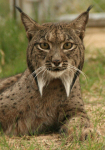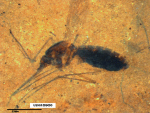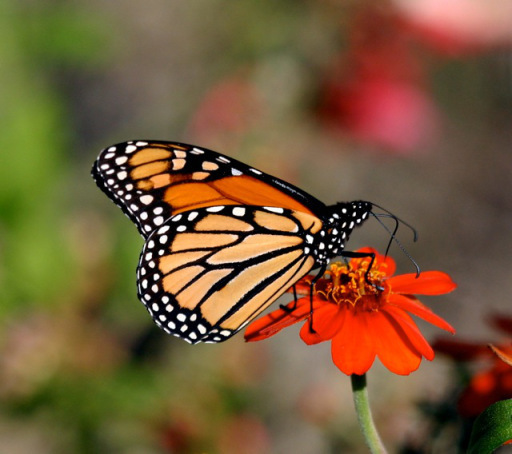Richard Conniff's Blog, page 59
December 27, 2013
The Next Big Thing #3: Eats Dry-Cleaning Fluid for Breakfast
It sometimes seems as if the entire world is irreversibly contaminated with industrial chemicals. Groundwater, for instance, is widely tainted with the industrial solvent trichloroethylene (TCE) and the dry-cleaning fluid tetrachloroethylene (PCE). Microbes may be our best hope for cleaning up the mess. When researchers first discovered in the 1990s that chlorine-hungry bacterial species in the Dehalococcoides genus could break TCE and PCE down into harmless ethane—the same gas used to ripen fruit—it sounded too good to be true. In the first test case, researchers injected a beer-keg’s worth of bacterial culture into the heavily contaminated groundwater beneath Kelly Air Force Base in Texas. Monitoring of wells showed the progress of the bacteria as they quickly spread through the polluted area—and after just 115 days, the PCE problem there was fixed. Dehalococcoides treatment, combined with a little molasses or lactose as a feedstock, is now a standard commercial cleanup technology. Other researchers are also working on bacterial methods to clean up mercury and other heavy metals, mining wastes, and 500 million gallons of North American groundwater contaminated with uranium.


The Next Big Thing #4: Nine Billion Served
The great challenge in agriculture is to double the amount of food being produced without plowing under what’s left of the natural world. The twentieth-century Green Revolution did it with massive doses of commercially manufactured fertilizer. Now we need to ramp up food production again—but without the environmental costs. Conventional fertilizer-manufacturing processes release large amounts of carbon dioxide from fossil-fuel combustion. Even worse, only a fraction of the nitrogen fertilizer actually gets into the crop. The rest ends up in ocean dead zones such as the one at the mouth of the Mississippi River—or in the atmosphere in the form of nitrous oxide, a far more potent greenhouse gas than carbon dioxide.
But researchers have recently discovered an unexpected diversity of soil microbes capable of breaking down nitrous oxide into nitrogen. They’re also figuring out how farmers can use these bugs at precise temperatures or moisture levels, or at certain stages in the life cycle of a plant, in order to get more nitrogen fertilizer into crops—and less into the environment. “Precision agriculture” is the term for that kind of farming, and microbes will play a major role in making it happen.
For instance, one reason it’s so hard to feed families in the tropics is that the clay soils there trap phosphate. A farmer may need to dump 100 units of imported fertilizer onto the land just to get 10 units into his crops. A lot of farmers go without costly chemicals, or they clear more forest to grow the food needed. But researchers at the University of Lausanne and the National University of Colombia are now working with a mass-produced root fungus that efficiently delivers phosphate to cassava, a staple food for much of the developing world. In the first season of field testing, this fungus cut phosphate use in half while boosting yields by 20 percent.
Microbes in the roots of plants are also nature’s way of getting nitrogen into plants, thus enabling peanuts, soybeans, and other legumes to extract (or “fix”) it out of thin air at a rate of hundreds of pounds of nitrogen per acre. Researchers have developed nitrogen-fixing bacterial strains that can increase yields for some crops by 50 percent. The hitch is that hardly anyone invests in getting those improved strains to farmers in the developing world, says Ken Giller of N2Africa. Given access to nitrogen-fixing bacterial strains that already exist, he says, subsistence farmers would have far less need to cut down forests to make new fields.


The Next Big Thing #5: A Crop For All Seasons
A few years ago at a hot spring in Yellowstone National Park, scientists were astonished to discover panic grass flourishing at 158 degrees Fahrenheit. The secret to this extreme tolerance wasn’t just about the plant itself. It also required interaction between a root fungus and a virus. That discovery led researchers to seek out root microbes from plants in various extreme environments, from dunes to alpine slopes.
Why bother? The weather is rapidly becoming more extreme and less predictable, complicating life for farmers everywhere. Scientists have responded with crops that are genetically engineered for a trait such as drought tolerance. But the Yellowstone discovery suggested a more flexible approach, one that doesn’t require farmers to predict the future and buy the right seeds at the start of the season. Instead, they’ll be able to treat a crop with a cocktail of different extreme-climate microbes so that the most beneficial microbes will proliferate, even as growing conditions shift.


The Next Big Thing #6: Disarming The Enemy
In 2010, mosquito-borne malaria made 210 million people sick. Of these, about 660,000 died, most of them small children in sub-Saharan Africa and South Asia. Dengue fever, another disease spread by mosquitoes, is almost as devastating. It afflicts up to 100 million people each year and now threatens to advance into the U.S. Standing in the path of both diseases is a Michigan State University microbiologist named Zhiyong Xi and a bacterium named Wolbachia. Wolbachia is present in about 28 percent of all mosquito species—but not the ones that transmit dengue or malaria. But Xi has figured out how to establish a heritable Wolbachia population in these species and has demonstrated that it prevents these mosquitoes from transmitting dengue fever or malaria.
For anyone who has been driven mad by mosquitoes, the old approach of killing as many as possible had obvious emotional appeal. But it was often environmentally disastrous, most notoriously with the broadcast application of the pesticide DDT. Xi believes the strategy of merely disarming mosquitoes could be safer while also giving public health officials a new tool to use in tandem with existing methods. Insecticide-treated bed netting, for instance, might still be the best protection from some night-biting mosquitoes. But Wolbachia could become the weapon of choice to neutralize the more challenging day-biters.


The Next Big Thing #7: Delaying The Post-Antibiotic Era
Reckless use of antibiotics over the past 60 years has produced an epidemic of resistance. Our most important line of defense against infectious disease is rapidly crumbling. In the post-antibiotic era, the director-general of the World Health Organization recently warned, “Strep throat or a child’s scratched knee could once again kill.”
Massive overuse of antibiotics in livestock has been a particular target of criticism. But it could also be the easiest part of the problem to fix. New technology makes it possible, for the first time, to understand the microbes involved at every stage in an animal’s life. That could give livestock producers a way to simply tweak “good” bacteria instead of routinely feeding their animals antibiotics to kill off “bad” bacteria.
It’s not just about pork, chicken, and cattle farming. Commercial fish farming has also faced sharp criticism for its reliance on antibiotics that can escape into surrounding environments. But in an experiment at the Norwegian University of Science and Technology, researchers tried a new approach. Instead of treating the water in hatchery tanks with antibiotics to prevent infections, the researchers instead colonized the tank water with a diverse community of beneficial bacteria to keep out opportunistic pathogens. This strategy of “competitive exclusion” lowered the death rate and produced young fish that were healthier and more robust. It also translated into reduced need for antibiotics or other treatments later in life, when the fish move out to pens in the open ocean.
Cargill, the American meat-packing company, recently tested a similar approach. Using competitive exclusion with healthy bacteria, its researchers reduced the amount of salmonella present in factory-reared turkeys by 90 percent. The only thing delaying implementation of these probiotic methods is the food industry’s unlimited access to antibiotics—and the persistent myth that the only good bacteria are dead ones.


The Next Big Thing #8: Brewing A Better Biofuel
Our efforts at shifting from fossil fuels to biofuels have been largely a bust so far. Using corn as a feedstock takes food off the table or drives up its price—with little or no reduction in carbon dioxide emissions. It would make more sense to turn farm wastes such as corncobs and stalks into biofuel. So far, though, it’s been too difficult to break down tough, woody fibers into simple sugars. But tweaking the relationships within teams of microbes may provide a way forward. University of Michigan researchers recently teamed the fungus Trichoderma reesei, which breaks down corn stalks and other tough plant wastes into sugars, with a strain of the bacterium Escherichia coli that had been genetically engineered to convert the sugars into isobutanol. Isobutanol produces about 82 percent as much energy as gasoline, a big jump up from the 67 percent produced by ethanol—and the process still leaves the edible part of the plant on the dinner table.


The Next Big Thing #9: Turning Electricity Into Fuel
The big problem with solar and wind technologies is that they generate power only intermittently. That means they require batteries or compressed air methods to store power during peak production and make it available when production drops. But microorganisms that have evolved in some of the most extreme environments on Earth promise to handle this task more efficiently. In a pilot study at the Vienna University of Technology, researchers have demonstrated that they can use the surplus electricity from renewable energy sources to split water into hydrogen and oxygen. Then they feed the hydrogen to microorganisms, which convert it almost instantly into natural gas. That fuel is easily stored and can fire conventional generators when the solar and wind generators are idle.


December 25, 2013
The Oxen: A Christmas Poem
Christmas Eve, and twelve of the clock.
“Now they are all on their knees,”
An elder said as we sat in a flock
By the embers in hearthside ease.
We pictured the meek mild creatures where
They dwelt in their strawy pen,
Nor did it occur to one of us there
To doubt they were kneeling then.
So fair a fancy few would weave
In these years! Yet, I feel,
If someone said on Christmas Eve,
“Come; see the oxen kneel,
“In the lonely barton by yonder coomb
Our childhood used to know,”
I should go with him in the gloom,
Hoping it might be so.


December 24, 2013
Wonder, Terror, Surprise, and Despair: The Year in Wildlife

This new species, off the coast of Australia, somehow managed to go unnoticed until 2013.
Sometimes in our modern urbanized world we get the feeling that wildlife is history, an absurd nineteenth-century holdover, hopelessly analog in a world that has become obsessed with all things digital.
Then something happens: A red-tailed hawk rips open a pigeon in Washington Square; a coyote lopes through Chicago’s Loop; a shark flips a seal in the air just off the beach on Cape Cod.
Then we remember: This stuff is real, and it’s still happening all around us.
For those lucky enough to pay attention, the year in wildlife was an endless source of surprise, delight, terror, despair, nobility, and wonder.
Here are a few of my favorite wildlife stories from 2013.

Cute but killers (Photo: Richard Conniff)
1. The Environmental Catastrophe of Free-Roaming and Feral Cats
For all of us who used to think it was nice to let our cats wander outdoors, the big, bloody shock of the New Year came from a study in January in the journal Nature Communications. An analysis by the Smithsonian Conservation Biology Institute and the U.S. Fish and Wildlife Service found that free-roaming cats kill an estimated 1.4 to 3.7 billion birds and between 6.9 and 20.7 billion mammals in this country every year. The bottom line: Send the kids out to play, but keep your little killer at home.
2. Birds, Bees, and Kinky Sex
The vast and colorful animal Kama Sutra continued to add new twists. In February, Japanese researchers announced that the marine sea slug Chromodoris reticulata loses its penis after copulation. But then, “new tissue emerges like lead in a mechanical pencil.” That is, it grows a new one. Later, scientists reported that a sea slug from the Great Coral Reef uses its forked and spine-ringed penis to stab its partner in the forehead after sex, giving painful new meaning to the concept of postcoital sadness.
3. An Extinct Species Joins the Undead
Scientists were delighted in 1973 when they discovered Australia’s gastric brooding frog, with its bizarre practice of swallowing its eggs and using its stomach as a womb. Then the species went extinct. But this past March scientists managed to grow early-stage embryos from DNA in frozen tissue samples collected from the species in the 1970s. If the name of this effort—the Lazarus Project—proves apt, scientists say they may yet “get this frog hopping again.”

Pangolin in rehab (Photo: Sukree Sukplang/Reuters)
4. Asia’s War on Wildlife
The nouveaux riches in China, Vietnam, and Thailand seemed to ramp up their campaign to kill, carve, and eat their way through some of the most charismatic wildlife on Earth—35,000 elephants gunned down or poisoned for their ivory, close to a thousand rhinos for their horns, tigers for medicine, perhaps 60,000 pangolins for medicine and the dinner table, millions of sharks taken for shark fin soup, and much more. A hopeful sign: China’s political elite and a few major corporations have taken shark fin soup off the menu. But can the rising environmental movement stop the killing before China and Co. drive some of the most charismatic animals on Earth to extinction?

Iberian lynx
5. Re-Wilding in Europe
Farmers are abandoning marginal land at an annual rate of roughly a million hectares, most of it in relatively remote and mountainous regions: the Carpathians, the Alps, the Pyrenees, and parts of the Baltic states. That’s opened up space for a comeback by lynx, golden jackals, European bison, moose, Alpine ibex, and other species. Europe’s wolf population is now up to 11,000 individuals, four times what it was in the 1970s.
6. The People Outside the Park Gate Are Not the Enemy
The old exclusionary style of managing protected areas has repeatedly failed. But this year provided powerful new evidence that giving neighbors a say in management can pay off for wildlife. With tigers in decline almost everywhere else, for instance, a community management scheme around Nepal’s Chitwan National Park in the Himalayan foothills increased its population of adult tigers from 91 just four years ago to 125 today.

A critically endangered Sarahan cheetah caught by a camera trap: (Photo: Farid Belbachir/ Reuters)
7. Camera Trap Magic
Camera trap images have gone viral this year, revealing species and wildlife behaviors even field biologists were not expecting. A few favorites: this video montage from Ecuador’s Yasuni National Park; the world’s rarest cat, the bay cat, captured on film in the dwindling forests of Borneo; the extremely rare Amur leopard filmed for the first time in northeastern China; Vietnam’s saola apparently not yet extinct; and this video of bears making like Alec Baldwin with paparazzi. The really exciting prospect: Kenya wildlife officials are now testing camera traps equipped with satellite-transmission technology to spot poachers and stop them before they can kill.
8. The Dawn of Remote Genetic Monitoring
Even with camera traps, it’s sometimes hard to figure out which animals actually live in a habitat. Now a few innovative researchers are simply collecting leeches, mosquitoes, and other bloodsuckers to get answers. They mash them up into an invertebrate soup, then sequence the DNA. So-called iDNA, for invertebrate DNA, is a quick-and-dirty technique for determining that, say, the Annamite striped rabbit still lives in the mountainous forests of Vietnam. A sister technique, eDNA, or environmental DNA, does the same thing for aquatic species by sequencing DNA from a water sample. Researchers will soon attempt it in China to find remaining wild populations of the Chinese giant salamander.

The blood meal turned to stone: USNM 559050
9. The Shifting Science of Jurassic Park
More or less as author Michael Crichton fantasized, scientists this year managed to find a blood meal in the belly of a mosquito that died 46 million years ago—not quite to the age of dinosaurs but tantalizingly close. They didn’t extract DNA. That will almost certainly remain a fantasy. But they identified the likely victim as the direct descendant of dinosaurs—a bird. Scientists also made news by finding actual dinosaur feathers and dino fuzz preserved in amber, putting pressure on the director of Jurassic World, now in development, to show dinosaurs as they really looked—with feathers, kind of like Big Bird.
10. The Monarch Butterfly Migration Goes Bust
North America’s iconic insect migration—and a perennial pleasure of autumn—didn’t happen. Only about 3 million monarch butterflies showed up at their overwintering sites in Mexico, down from 60 million last year. If we lose the monarchs, scientists say, agricultural intensification will be the major culprit. With most corn genetically modified to tolerate the herbicide Roundup, farmers now clear their fields of all the milkweed on which the butterflies depend.
11. Porpoises Playing in the Thames
Opponents often say that attempts to improve the environment accomplish too little and cost too much. But the idea that they can quickly make our lives better got a spectacular boost in December when a pod of five harbor porpoises went swimming up the River Thames into the heart of London. Just 50 years ago this river was a dead zone. The cleanup effort since then has cost billions. So was it worth it? At least part of the payoff was in the giddy excitement of seeing marine mammals gracefully breaking the surface at Southwark Bridge.
I think we should head into 2014 with that last success in mind. With a bit of effort—planting a bush, passing a law, letting the lawn get a little less tidy—we can make a world where animals and people live together. Here’s the first step: It’s the middle of Christmas week, and the getting and spending is over. So just step away from the computer, go outside, and see for yourself what a glorious thing even a cardinal or a gray squirrel can be.


Planting to Save the Last of the Monarch Butterflies

Last of the monarch migration? (Photo: Chip Taylor)
Nice article by Michael Wines in the New York Times about ways to save the monarch butterfly migration.
CEDAR FALLS, Iowa — Bounding out of a silver Ford pickup into the single-digit wind-flogged flatness that is Iowa in December, Laura Jackson strode to a thicket of desiccated sticks and plucked a paisley-shaped prize.
It was a pod that, after a gentle squeeze, burst with chocolate brown buttons: seeds of milkweed, the favored — indeed, the only — food of the monarch butterfly caterpillar.
Once wild and common, milkweed has diminished as cropland expansion has drastically cut grasslands and conservation lands. Diminished too is the iconic monarch.
Dr. Jackson, a University of Northern Iowa biologist and director of its Tallgrass Prairie Center, is part of a growing effort to rescue the monarch. Her prairie center not only grows milkweed seeds for the state’s natural resources department, which spreads them in parks and other government lands, but has helped seed thousands of acres statewide with milkweed and other native plants in a broader effort to revive the flora and fauna that once blanketed more than four-fifths of the state.
Nationwide, organizations are working to increase the monarchs’ flagging numbers. At the University of Minnesota, a coalition of nonprofits and government agencies called Monarch Joint Venture is funding research and conservation efforts. At the University of Kansas, Monarch Watch has enlisted supporters to create nearly 7,450 so-called way stations, milkweed-rich backyards and other feeding and breeding spots along migration routes on the East and West Coasts and the Midwest.
But it remains an uphill struggle. The number of monarchs that completed the largest and most arduous migration this fall, from the northern United States and Canada to a mountainside forest in Mexico, dropped precipitously, apparently to the lowest level yet recorded. In 2010 at the University of Northern Iowa, a summertime count in some 100 acres of prairie grasses and flowers turned up 176 monarchs; this year, there were 11.
The decline has no single cause. Drought and bad weather have decimated the monarch during some recent migrations. Illegal logging of its winter home in Mexico has been a constant threat. Some studies conclude that pesticides and fungicides contribute not just to the monarchs’ woes, but to population declines among bees, other butterflies and pollinators in general.
But the greatest threat to the butterfly, most experts agree, is its dwindling habitat in the Midwest and the Great Plains, the vast expanse over which monarchs fly, breed new generations and die during migrations every spring and autumn. Simply put, they say, the flyway’s milkweed may no longer be abundant enough to support the clouds of monarchs of years past.
Soaring demand for corn, spurred by federal requirements that gasoline be laced with corn-based ethanol, has tripled prices in a decade and encouraged farmers to plant even in places once deemed worthless. Since 2007, farmers nationwide have taken more than 17,500 square miles of land out of federal conservation reserves, an Agriculture Department venture that pays growers modest sums to leave land fallow for wildlife. Iowa has lost a quarter of its reserve land; Kansas, nearly 30 percent; South Dakota, half.
A study published in February in the Proceedings of the National Academy of Sciences analyzed land use in five states — Iowa, Minnesota, the Dakotas and Nebraska — in the broad arc of farmland where corn and soybeans are intensively planted. Over the five years from 2006 to 2011, the study concluded, 5 percent to 30 percent of the grasslands were converted to corn and soybean fields, a rate it said was “comparable to deforestation rates in Brazil, Malaysia and Indonesia.”
At the same time, farmers have switched in droves to new varieties of crops that are genetically engineered to tolerate the most widely used weed killer in the United States. The resulting use of weed killers has wiped out much of the milkweed that once grew between crop rows and on buffer strips separating fields and roads.
Roughly half of all Mexico-bound monarchs are hatched in the Midwest and depend as caterpillars on milkweed for food, according to a 2012 study that concluded that the region lost 58 percent of its milkweed and 81 percent of its monarchs between 1999 and 2010.
Said Dr. Jackson, “I can drive five hours east, five hours north, five hours south, five hours west and see nothing — nothing — but corn and soybeans.”
Beleaguered as they are, the butterflies do have one advantage: their seemingly unmatched popularity. Scientists allow that neither the butterfly nor its migration is crucial to the balance of nature. But as rallying points for conservationists and early warning signals of environmental problems, they are invaluable, backers say.
Monarch Watch’s director, Chip Taylor, decided last spring to sell milkweed “plugs” to supporters, charging $58 for a flat of 32 plants — and sold 22,000. The Natural Resources Defense Council gave him a grant this month to supply still more to 100 schools. Even the crowdfunding website Kickstarter sports a proposal to rally monarch support through an arts program.
There is no shortage of ideas. The Pollinator Partnership, a San Francisco-based organization, is pushing for federal legislation that would encourage more state highway departments to stop mowing roadsides and plant bee-friendly wildflowers and monarch habitat instead. (Some states, including Iowa, Texas and Minnesota, already plant some medians and shoulders.)
Next month, the group will publish a booklet showing utility companies how to establish monarch habitats under their power line rights-of-way. The organization’s executive director, Laurie Davies Adams, promoted aid to monarchs before the Wildlife Habitat Council, a consortium of major corporations involved in environmental stewardship.
“This is the Fortune 500 — big manufacturing and mining concerns,” she said in an interview. “I talked about pollinators and monarchs specifically, and they get it. But nobody’s acting yet.”
A few have stepped forward. Chevron added monarch habitat several years ago to a 500-acre stretch of native wetlands and prairie it maintains on an old refinery site 20 miles west of Cincinnati. Waste Management Inc. includes butterfly-friendly plantings on scores of capped landfills around the nation.
Dr. Taylor, of Monarch Watch, said he was convinced that the annual migration to Mexico can be revived; butterfly populations, he said, can fluctuate wildly from year to year as weather and habitat change. The insect’s troubles probably were as deep, or deeper, during the Dust Bowl of the 1930s, he said. But so far, he said, monarch backers are mostly preaching to the choir, “and the choir’s of limited size.”
Northern Iowa’s Dr. Jackson said it would take a much larger — and speedier — effort to undo the impact of thousands of square miles of habitat loss.
“Monarchs are just like other iconic species,” she said. “Once people stop being accustomed to seeing them, they stop caring and they forget. Support drops like a ratchet.”





